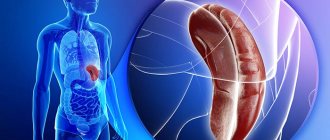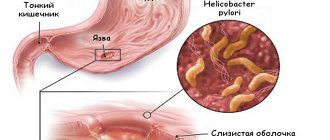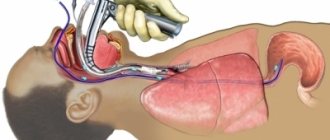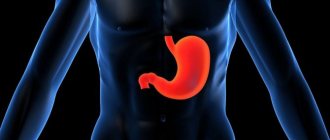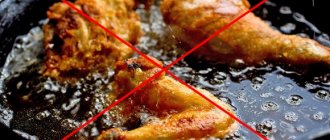The problem of colic in newborns did not arise yesterday or today. Back in the days when most people had no idea about medications, mothers knew how to cope with the symptoms of colic in children using folk remedies, and also knew how to reduce or prevent their manifestations by eliminating one of the causes of colic - swallowing air during feeding.
So, to prevent colic, which can occur due to air entering the gastrointestinal tract during feeding, the mother can take the following measures:
- apply it correctly to the baby's breast so that he does not swallow air along with the milk. To do this, make sure that the baby completely or almost completely grasps the nipple's areola. If the child is bottle-fed, it is advisable to use anti-colic bottles;
- Before feeding, place the baby on his tummy and leave him in this position for a while. If the baby starts to cry, try to distract him so that the duration of lying on his stomach at first is at least 5 minutes. Gradually the time can be increased to half an hour;
- After feeding, you need to hold the baby upright so that he can burp out excess air. This recommendation applies more to formula-fed babies or babies with frequent regurgitation. If a baby is breastfed, it is difficult to overfeed him and thus he is much less likely to regurgitate.
Read more about the features of combating colic on artificial and breastfeeding.
Tummy massage and exercises for colic
There is a special tummy massage technique that is necessary not only to combat intestinal colic, but also to generally strengthen the body. With the help of massage, food moves more actively through the intestines, and air comes out without difficulty and does not create spasms.
Mom or dad can do the massage themselves - the technique is not complicated. Before the procedure, the baby's tummy needs to be warmed up a little. To do this, apply a warm diaper to it, but it is better to use a regular or salt heating pad, as they retain heat longer.
For massage, you should place the child on a hard, stable surface (for example, on a couch), which must first be covered with a diaper. This is necessary, since after the procedure a small ventricle can present surprises.
The massage should be careful and soft. It must be done with warm hands to make the baby feel good. Read more about massage techniques.
Special exercises will help get rid of excess gases in the newborn’s stomach and make defecation easier. With the help of exercises, the necessary pressure is provided on the abdominal wall, which helps cleanse the stomach. They can be done when the mother sees that the baby has begun to be bothered by colic:
- "Bike". The baby is placed on his back, taken by the feet with his hands and his legs are bent, pressing his knees to his stomach. At the same time, it can be rolled from one side to the other.
- Exercise with a ball. The baby is placed on an inflatable ball, tummy down. In this case, the child needs to be held and slightly rolled. Light pressure ensures proper bowel function.
- Exercise with warming the tummy. Performed on a flat, slightly soft surface. The baby is placed on his stomach, and a warm rolled up towel or a salt heating pad is placed under him. The legs need to be spread apart and at the same time pulled towards the tummy.
Perform each action 5-7 times.
Video massage for colic
https://www.youtube.com/watch?v=lyNZv5X-sxI
How to cure colic
During the consultation, the pediatrician will prescribe appropriate medications. Through individual selection, it will be possible to determine which remedy is effective for your child.
Ways to get rid of colic:
- If a child is fed formula, you should try changing it and observe. If the manifestations of colic decrease, then the reason was the inappropriate composition of the mixture.
- Pacifier. Different manufacturers have a wide variety of this necessary item for feeding a baby. There are nipples of a regular shape, there are special orthodontic ones, which in their shape are close to the structure of the mother's nipple, which allows you to capture less air during feeding, or with an anti-air valve that prevents the nipple from sticking together during sucking.
- If there are problems with gas formation in a baby feeding on mother's milk, then the mother should monitor her diet and, if necessary, follow a diet. It is necessary to remove from the diet foods that cause fermentation - cabbage, grapes, legumes, as well as carbohydrate and fatty foods. It is recommended to take herbal tea with chamomile and mint.
- Sometimes the doctor prescribes an enzyme preparation for the mother that affects the absorption of lactose.
- Pediatricians prescribe probiotic medications as preventive therapy. It is known that due to immaturity, a child’s digestive system has few beneficial bacteria to digest food, and probiotics restore the necessary microflora. They have a positive effect on the absorption of food and normalize the functioning of the gastrointestinal tract.
- Often the cause of colic is overfeeding. If your child often spits up after eating, you can try reducing the portion of milk or formula.
- After feeding, you should hold the baby in an upright “column” position for 15 minutes (until the air he swallowed comes out).
- To prevent colic, you can try feeding a little earlier than the normal time. Because the baby is very hungry, he may greedily grab the pacifier or nipple of the mother, swallowing a lot of air, which will lead to the accumulation of gases and cramps.
- You can follow the example of our grandmothers, when pharmacies were not stocked with various drugs - brew dill water. Give chilled from a spoon some time after feeding.
- In some cases, the use of a gas outlet tube is indicated.
For the treatment of colic, pediatricians prescribe medications and homeopathic medications that help relieve colic. These are those products that contain simethicone with a carminative effect; it does not interact with the tissues and cells of the body, therefore it is safe for use in children.
The effect is the “collapse” of air bubbles in the intestines, the pressure on its walls disappears, and bloating goes away. These drugs include: “Espumizan”, “Bobotik”. Also, to help colic go away, medications are prescribed that contain fennel fruits that reduce gas formation, for example PLANTEX.
Sensory stimulation
To prevent and alleviate the symptoms of intestinal colic in the tummy, pediatricians give the following recommendations:
- Before each meal, approximately 15-20 minutes before feeding, it is necessary to lay the newborn on his stomach, this is a prevention of excessive gas formation.
- When swaddling, do not wrap the diaper too tightly. By loosely swaddling, your baby will have more room to move, which will help any trapped gas escape faster.
- If there is severe crying due to colic, you can try applying a warm, but not hot, diaper heated with an iron or on a radiator. Warmth has a beneficial effect on the baby and will help to calm down.
- For colic, it is recommended to do massage movements. With the back of your hand you need to stroke the baby's tummy clockwise, while simultaneously pressing the baby's bent legs against it. Repeat several times until gases come out.
Dr. Komarovsky emphasizes that with frequent abdominal pain, the doctor must examine the baby, determine the cause and prescribe the appropriate treatment. What if the baby has a normal temperature, a good appetite, the tonsils are not red, there are no rashes on the skin, the ears are not bothered, but the child screams a lot and it is difficult to calm him down? This is intestinal colic.
Herbs for colic in a newborn
Among folk remedies for treating colic, medicinal plants are considered quite effective. Here are some of the most effective recipes.
Chamomile
You will need the flowers of the plant. They need to be dried in the sun. Then take 15 grams and pour 400 ml of boiling water. The liquid should be kept over low heat and brought to a boil. Then the drug should sit for an hour, after which it can be filtered. The baby should be given one teaspoon three times a day.
Fennel
Take 10 grams of fennel fruit and pour 200 ml of boiling water. The container is left warm for one hour. The drug is filtered and given to the baby no more than 10 ml before meals three times a day. Read in more detail about the properties of dill water based on fennel fruits (dill), prepared at home and in pharmaceutical preparations.
Dill
Dill water is prepared from the plant. To do this, you need to brew one teaspoon of dill seeds in boiling water. You will need 200 ml of water. The composition should be boiled over low heat for 20 minutes. After this, the broth should sit for 30 minutes. Then you need to strain it. It is better to give the baby 10 ml of the resulting liquid three times a day.
Tea made from mint, anise, cumin and valerian root
Chopped dried mint should be mixed in equal proportions with cumin, anise seeds and valerian root. Pour 20 grams of the mixture into a glass and brew in boiling water. Leave to infuse for 30 minutes. Give the newborn a teaspoon of strained liquid three times before meals.
Sage tea
You need to take sage leaves and herbs, finely chop them to make one tablespoon. Pour a cup of boiling water and leave for 50 minutes. Afterwards, the tincture should be filtered. The child should be given one tablespoon of water every two hours.
Important! Click herbs should be used very carefully. If there is any suspicion of individual intolerance, you should stop taking it immediately.
There are also ready-made baby teas based on extracts of medicinal plants for colic (Humana, Hipp, Bebivita, etc.), as well as herbal remedies in which the main active ingredient is of natural origin (Plantex, Baby Calm, Colic Calm).
comparison table
It is not enough to read about each drug; it is important to clearly compare the drugs with each other, this will allow you to make the right choice. Specialists have compiled a table of characteristics especially for buyers.
| Name | Compound | At what age should it be given? | Contraindications | Cost (rubles) | Rating according to users |
| Plantex | Essential oils, fennel extract, atenol | From 2nd week | Impaired absorption of galactose, galactosemia | 530 | 5 |
| Bebinos | Extract of coriander seeds, fennel, chamomile flowers | From birth | Seizure activity, epilepsy | 290 | 4.8 |
| Baby Calm | Natural essential oils | From 2nd week | Individual intolerance to components | 310 | 4.7 |
| Bifiform Baby | Live bifidobacteria, thermophilic streptococci | From birth | Individual intolerance | 480 | 4.7 |
| Espumisan L | Simethicone, sorbic acid, water | From birth | Intestinal obstruction, fructose intolerance | 480 | 4.6 |
| Bobotik | Excipients, citric acid, sodium saccharinate | From one month | Baby's age | 240 | 4.5 |
| Sub Simplex | Simethicone, silicon dioxide | Since the year | Intestinal colic | 300 | 4.4 |
You will be interested in: TOP 10 best winter children's sleds: rating, which ones are better to choose, reviews, characteristics, pros and cons
By visually comparing the characteristics of each medication, you will be able to make a choice in favor of one or the other.
Warmth against colic
Something warm will help soothe the pain in your tummy. There are three main ways to do this:
- The baby is placed on its tummy to the mother's breast. From here the baby receives the necessary portion of heat, which warms the sore spot. In addition, the baby is calmed by tactile communication with his mother - he feels the presence of a loved one.
- A salt heating pad will also help. It heats up to the optimal temperature and transfers heat to the baby. This heating pad is sold in every pharmacy.
- Warm diaper. It works on the principle of a salt heating pad. The fabric is ironed, folded and applied to the tummy.
How to help a baby with colic?
Colic is not a diagnosis, it is a normal condition of a completely healthy child, and although it is extremely painful, many children go through it. Many doctors explain the physiology of colic by swallowing a large amount of air during feeding, or by the accumulation of air from bacteria that are just beginning to populate the intestinal mucosa, but, in fact, so far not a single pediatrician can say with certainty what it is or what the cause of its occurrence is. , and how to help the baby.
First of all, let's determine that the baby really has colic . To do this, there are several questions, answering them positively, you will be sure that this is the reason for your baby’s crying:
1. The child’s age is from 2 weeks to 4 months (in rare cases up to 6 months);
2. Rule of three : crying and worrying continue for 3 hours or more, this happens at least 3 times a week and has been going on for about 3 weeks;
3. Crying begins mainly an hour and a half after feeding and most often intensifies in the evening;
4. The child first gets worried, twists his legs, arches, and then begins to cry piercingly (or rather even scream);
5. After the passage of gases and the act of defecation, the child becomes easier.
Diet for mom
Treatment of colic in a newborn will not bring results if the mother does not reconsider her diet. A woman who breastfeeds her child must follow a special diet. To do this, you should give up milk, many fruits, vegetables, and sweets. Read about what a nursing mother can and cannot eat in this article.
If all these measures do not help, then after consulting a doctor, you can try using medications based on dimethicone and simethicone.
Voting for the best colic remedy for newborns
What remedy for colic for newborns did you choose or recommend?
Colif
6.78 % ( 4 )
Baby Doc lactase
6.78 % ( 4 )
Primadophilus children's
10.17 % ( 6 )
Bifiform Baby
6.78 % ( 4 )
Espumisan Baby
16.95 % ( 10 )
Bobotik
18.64 % ( 11 )
Koli crocodile
5.08 % ( 3 )
Cook la Cook
6.78 % ( 4 )
Baby Calm
15.25 % ( 9 )
Causes and symptoms of colic in infants
Colic occurs due to air entering during feeding.
When the baby is three months old, colic in the newborn goes away on its own. One of the reasons is considered to be underdevelopment of the gastrointestinal tract. Doctors also believe that this condition is affected by the air that enters during feeding. Not all specialists can determine why intestinal colic occurs in newborns. Treatment is prescribed after examining the child.
It is important that in babies up to two months of age, colic lasts two hours, and after this age it can last up to 4 hours. Colic can occur if the baby is not allowed to burp excess air after feeding.
A painful condition can manifest itself when the baby takes a horizontal position. This makes it difficult to digest and pass gas. Even in the first few months, the baby's intestines are never empty.
Colic is associated with overfeeding the baby. When there is more food than the stomach can digest, there are not enough digestive enzymes, and the food undergoes fermentation. This leads to the formation of gas formation.
Colic is possible due to overeating
Another reason is congenital lactose deficiency. Therefore, when colic appears in newborns, treatment should begin as early as possible.
Symptoms in a newborn are indirect, since the mother can see and feel them. The baby screams and cries. He may suddenly start crying and quickly calm down. Some babies may show the following signs:
- The child draws his legs in;
- The face turns red;
- The stomach is bloated.


